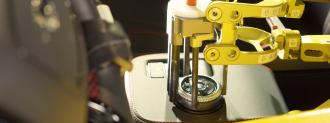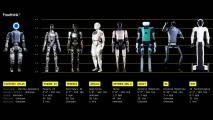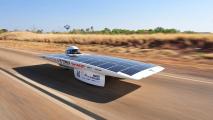Ford Motor Company has built a pair of robot test drivers to fill in for humans during dangerous endurance tests designed to mimic extreme driving conditions.
The challenge: Drivers need to know they can rely on their vehicles to work in a variety of environments, which means automakers need to stress test their vehicles under those conditions.
Ford does much of this testing in the real world, but in 2018, it opened a “Weather Factory” in Germany where it could simulate precipitation, extreme temperatures, and more to see how its vehicles would respond.
Shelby and Miles … can handle anything from -40 to 176 degrees Fahrenheit.
Some of this testing requires drivers to sit behind the wheel for hours in conditions that could harm their health — during wind tunnel testing at high altitudes, for example, Ford has to have oxygen bottles and a paramedic on-site.
The robot test drivers: Now, Ford has unveiled Shelby and Miles, a pair of robot test drivers that can stand up under the most challenging testing conditions.
“These two new drivers are fantastic additions to the team,” Frank Seelig, supervisor of wind tunnel testing for Ford of Europe, said in a press release.
New additions: Unlike crash test dummies, the robot test drivers aren’t humanoids, since the point of these tests is to see how the cars hold up, rather than the drivers.
But they are able to do all the things a human driver could do: start a car, switch gears, push the gas, brake, and clutch pedals, etc.
And, unlike human drivers, Shelby and Miles aren’t fazed by high altitudes or extreme temperatures (they can handle anything from -40 to 176 degrees Fahrenheit).
The robot test drivers are also capable of 12 straight hours behind the wheel — something that wouldn’t be feasible for humans — allowing Ford to perfectly replicate tests over and over again.
“Once the robot is in the driver’s seat, we can run tests through the night without ever having to worry that the driver will need a sandwich or a bathroom break,” Seelig said.
We’d love to hear from you! If you have a comment about this article or if you have a tip for a future Freethink story, please email us at [email protected].






